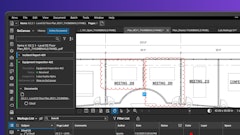
“Jobsite connectivity” became a catch phrase in the construction industry a number of years back as technology began to connect the dots, or in this case data points, between various elements of the construction site. The term first emerged with early telematics platforms, which were designed largely to monitor equipment location and manage logistics. Today, it has grown to encompass nearly every aspect of the construction process.
Advances in cellular- and satellite-based data transmission helped foster the expansion of the connected jobsite. The activation over the past decade of an array of global satellites within the Global Navigation Satellite System (GLONASS), along with the migration to 4G cellular networks, meant data could be readily transmitted back and forth from projects to the office, often in real or near real time. Data transmission will become even more rapid as the 5G network continues to develop, enabling virtually instantaneous communication between cellular-based systems. Such advances, along with major enhancements in equipment electronics, will continue to facilitate the movement of a vast realm of data.
From a machine standpoint, connectivity now extends from the equipment on the ground to the atmosphere above and on into cyberspace. Electronics connecting the various systems of today's equipment enable them to “talk” to each other to optimize machine performance. Operating information from these systems is sent to the user via the machine’s controller, and specific parameters are shared with a telematics system, where enabled. This data is then conveyed via a cellular or satellite network to the "cloud" – a network of data center servers that store and allow access to data from virtually any Internet-enabled device – which makes it accessible 24/7 via designated platforms, whether in the field or in the office.
More Data + Improved Analysis = Actionable Insights
Today's machine-based connectivity provides the ability to monitor and manage machines in ways that users of the earliest telematics systems likely never dreamed of. Thousands of data points can be captured and filtered into meaningful information to enable productivity improvements, better management of equipment on projects and improved uptime of the machines.
Electronics and sensors built into equipment at every level, even down to the filters, are working to facilitate the transition from proactive to predictive maintenance. This will mean fleet managers can go beyond scheduled servicing based on hours or service history to actually anticipating how long it will take before systems and components fail in order to maximize their service life and cut costs and downtime over the life cycle of the machine.
Advances in machine connectivity have been and will continue to be an important and necessary window into what is happening within your equipment and on your projects. But the data generated is only meaningful if you recognize what it's telling you. Constructive data analysis is essential, or the value of the data is lost.
Fortunately, more and more telematics platforms deliver data filtered into usable reports and insights by AI-enabled platforms or by the service providers themselves. This means fleet managers more quickly gain actionable insights that they can use to improve equipment performance, cut owning and operating costs and ultimately boost profits on projects.
Foundation for the Future
The gains seen thus far in equipment and overall jobsite connectivity also hold promise for future innovation. They lay the foundation for not only increased automation but eventually full equipment autonomy. Cross-communication between machines and immediate visibility into operations, events and issues with equipment on site will enable fully autonomous earthmovers to increasingly become more fact than fiction. Some versions are, in fact, already in action in quarry and mining operations, largely for transport of materials to and from designated areas.
So, does this mean we’ll soon see an entirely people-free jobsite?
This seems highly unlikely. Construction projects are far too complex and varied to remove people completely from the equation. But it could mean the automation of repetitive and often more menial tasks, leaving skilled operators and workers to complete more challenging jobs – critical when you consider the skills shortage doesn't seem destined to improve any time soon. It could also mean the physical boundaries of a project extend well beyond the jobsite to include off-site locations. This could make it easier to attract future generations of operators who may be happy behind the controls but not necessarily willing to set foot outside the creature comforts, and safety, of an office.
The prospects are intriguing, and it will be fascinating to see how jobsite connectivity further evolves, and revolutionizes, the capabilities, serviceability and utilization of the equipment you will use in your fleet.



















